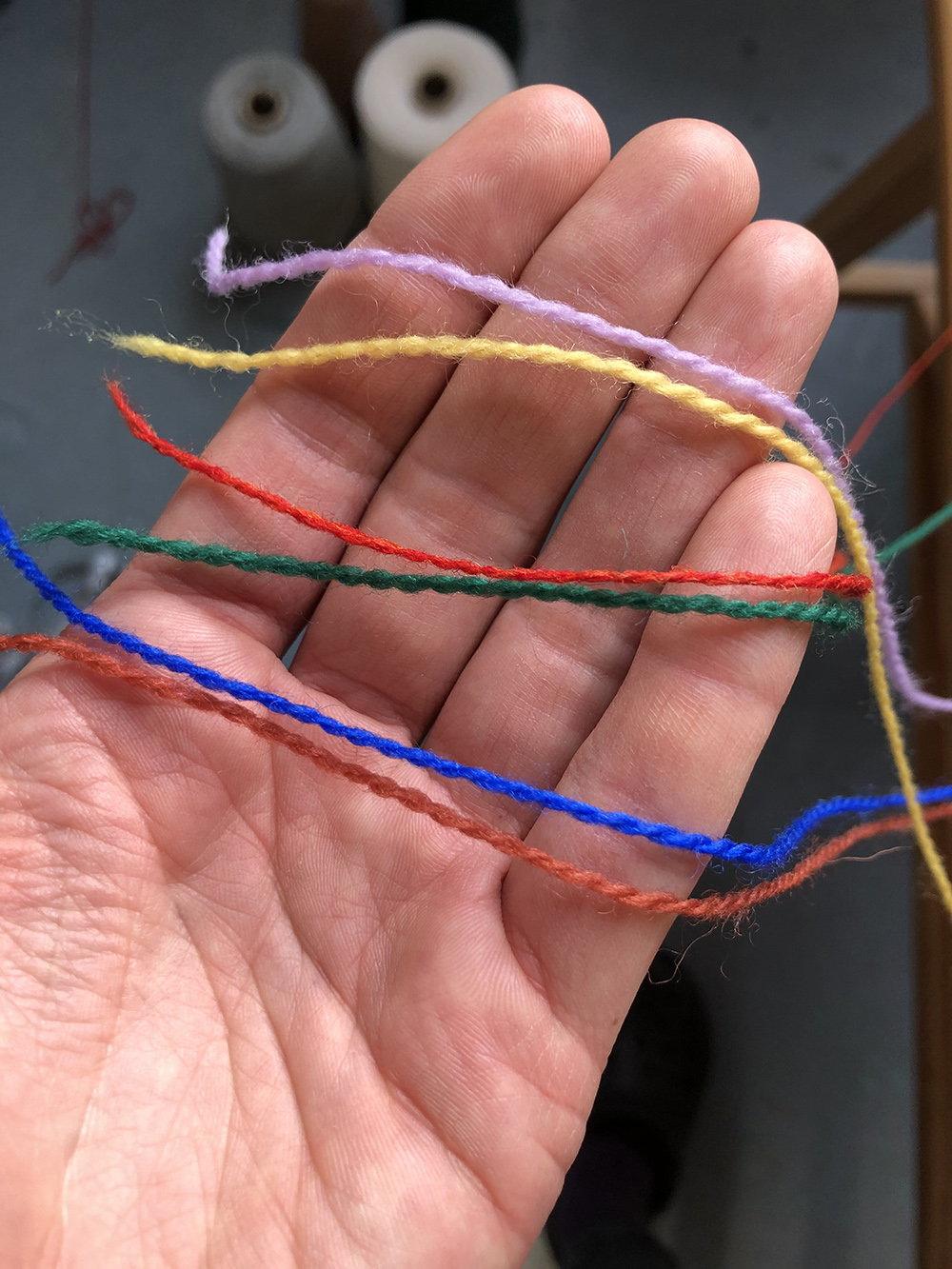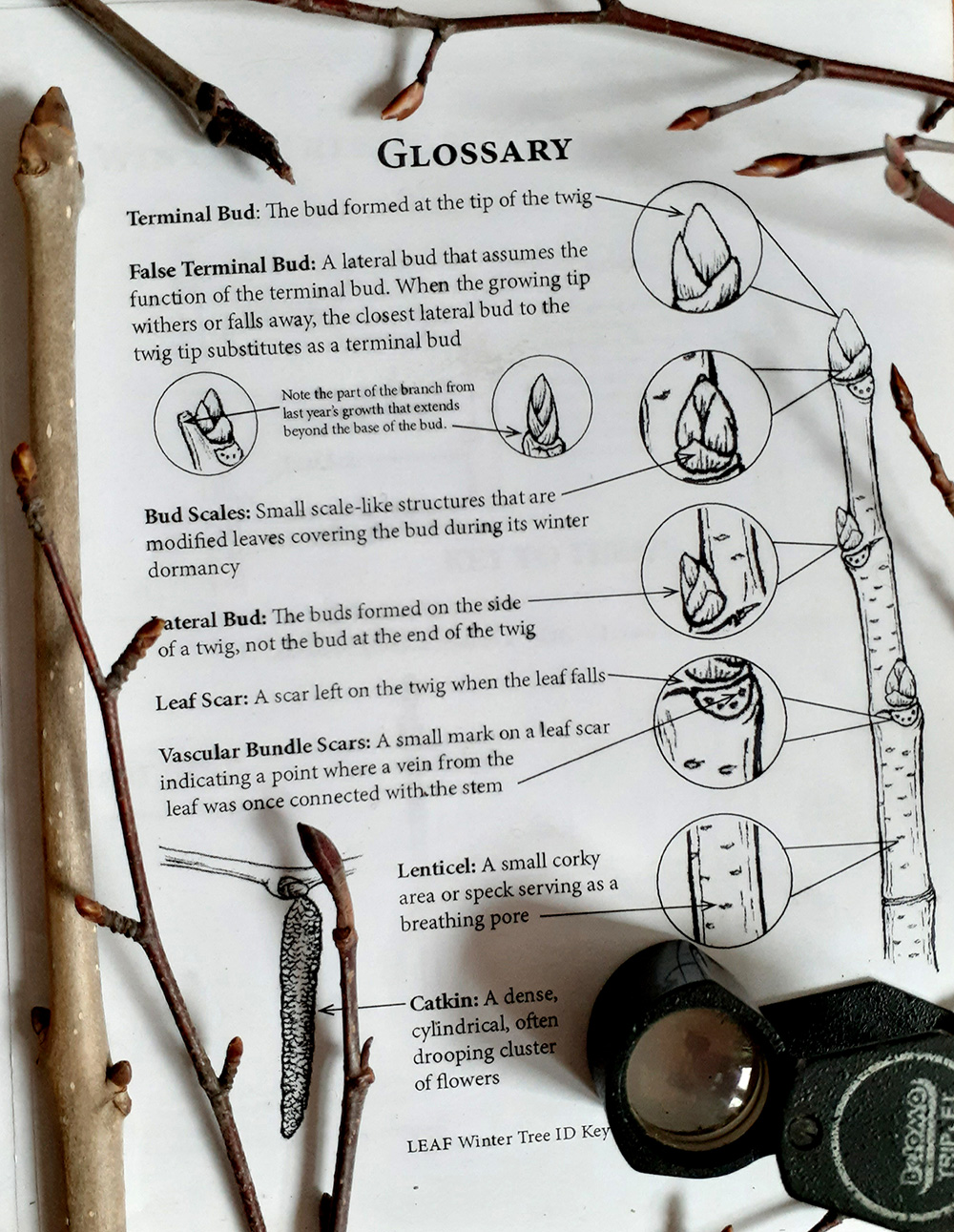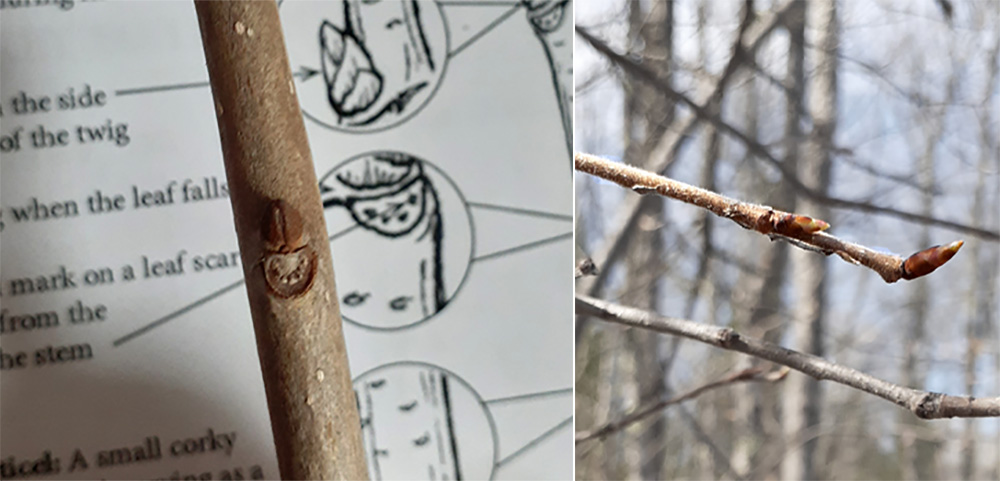
Observations of Plants and Animals

Resident Artisan Emily Derke discusses the inspiration and learning that spring brings in her new blog post.

Learning the terminology for bud ID
As the season changes from winter to spring, there is a lot happening that one could notice. The maple sap ran well in a lot of areas, and I have heard a report from elsewhere in the state that the birch sap has been running for a while now. This time of year I start to think about eating the early spring greens that will come up, scouting out bark for basketry, and what kinds of things i’d like to do before the thick bug season sets in. There is a lot to know and always more to learn about what is going on in the world- animals, trees, shrubs, grasses, flowers, insects, rocks, etc. Just the other day I walked down a path and saw a few kinds of tiny flowering grasses. What kind of grass are they? They must do this every year. Where do I even begin with trying to identify a grass? I’m not really sure, so for now I just took a moment to notice.
What are the plants and animals doing at this time of year? Each season is different for them too. Recently, I have been trying to get to know the trees better by looking closely at their buds and other features before they leaf out. Using a winter tree ID guide from the UofMN website, I have been collecting twigs from trees that I know and don’t know, and looking closely at them to figure out what they are. This has been a really exciting endeavor. Counting bud scales, looking at bundle scars with a hand lens, and noticing all of the vastly different characteristics each tree possesses.

Looking closely at this twigs bundle scars / The bark on an elm tree always leaves me puzzled, but I just learned that this crooked terminal bud is a classic feature on elms.
One of the twigs I am most excited by is the young bur oak. They can have such an old and rugged look to them, with texture and character that makes them seem ancient. Some young twigs from other tree species look smooth and new, but the bur oak starts life out with such roughness and character.

The animals are up to all kinds of things right now too- the woodcock peenting and doing it’s sky dance, the geese flying overhead, loons calling…. and then there’s the beavers. What a neat animal. They just spent the whole winter in their lodges, eating the food they had stored frozen in place outside of the lodge. In the early spring you can sometimes find where the beavers have tunneled out of the thinning ice on the water’s edges in search of some fresh food. Once the water is open, the young beavers (2 years old) are sent out to create their own new residence elsewhere.
Beavers make scent mounds to mark their territory in the spring when the young beavers are out looking for a place to move in. They will heap up mud and leave their scent (castoreum) on the mounds.

Scent Mound / Beaver Lodge
Noticing all of the changes in the plants and animals right now signals a time when I start thinking about materials for basketry and other crafts. The willow bark will be peeling soon- I use this material in basketry and to extract the tannins for one method of tanning hides. The “winter” birch bark and other barks will be peeling soon as well, and are also used in basketry. It’s all happening around the same time when we can eat the young nettles, dandelion greens, and sucker fish.
I’ve been working on some baskets recently. This one is made with a gifted piece of bark harvested a year or more ago, and felt thematic since spring is coming. Some new things I’ve been working on include winter bark etching, trying out some new stitches with spruce root, and merging a few of things I love- baskets and animals.

Inspired by the beavers.
Working with the materials from our local environments creates the necessity to get to know the plants and animals of the area, looking closely, and to spend time noticing what is happening with them throughout the year. There is no date on the calendar that says it is time to harvest this or that, just the signs that tell us what will happen soon, and the need to notice what plants are blooming and growing and how the animals are moving around. Maybe early tree barks are ready to harvest when the beavers have been dispersed from their lodges for a few weeks and the leatherwood is flowering, or maybe it’s time to peel willow bark when the goldeneye ducklings hatch… Or really it’s all too variable to know for sure, and we just have to be out there and notice what’s happening every day, but it’s exciting to look closely at all this.
Up here in Grand Marais there’s a little more time to look at the tree buds before they leaf out… and I keep listening to this bird song disc but we’ll see how much it all sticks to memory when the birds show up!
I’m looking forward to this upcoming event :
Each year at the end of May North House hosts a week of classes all focused on exploring and celebrating the plants and wildlife of Minnesota's northern forests. This year since we can't gather in person, the Northern Landscapes week will be hosted virtually. There will be webinars on natural history topics designed to help you get out in nature around your own home, and a North House BioBlitz hosted through iNaturalist. Check out the Northern Landscapes Week webpage for more details, the event runs May 25-31st.